The idea for a WWII-themed museum in New Orleans began in the 1990s when Stephen Ambrose wanted a permanent home for the artifacts and oral histories he’d collected while writing Band of Brothers. After opening as the National D-Day Museum, the idea evolved, and the scope grew. Then, in 2004 Congress designated it as America’s National WWII Museum — and the rest is history.


The Ultimate Guide to the National WWII Museum in New Orleans
“The National WWII Museum is centered on real men and women telling real stories in their own words,” says Stephen Watson, President & CEO. Since opening, the museum has grown to six buildings across a six-acre campus and amassed a collection of 250,000 artifacts, including letters, oral histories, weapons, uniforms, vehicles, and aircraft.
I took a guided tour with Mike Bell, the Executive Director of The Jenny Craig Institute for the Study of War and Democracy, a national research center housed at the National WWII Museum. If you’re planning a trip to New Orleans, here’s how you can get the most out of your visit to the National WWII Museum.
- How to get to the National WWII Museum and where to park
- National WWII Museum hours
- How much does it cost to go to The National WWII Museum?
- How long does it take to go through the National WWII museum?
- The best times to visit the National WWII Museum
- Where to start your day at the National WWII Museum
- Getting around the National WWII Museum
- The #1 piece of advice for visiting the National WWII Museum
- The five things you must do at the National WWII Museum
- Night visits of the National WWII Museum
- Where to eat at the National WWII Museum?
- Where to stay near the National WWII Museum?
- The Louisiana Memorial Pavilion: When the museum opened in 2000, the Louisiana Memorial Pavilion encompassed the entire museum. Today, the three-story building houses The Arsenal of Democracy exhibit and the D-Day Invasion of Normandy, the museum’s original exhibit. The American Spirit Bridge is an enclosed pedestrian bridge allowing visitors to cross Higgins Boulevard to the Solomon Victory Theater.
- On the first floor of the Solomon Victory Theater building is where you can watch Beyond All Boundaries, a 45-minute 4D theatrical film taking visitors to the front lines of WWII that plays at the top of every hour. On the second floor is the Merchant Marine Gallery.
- Through another footbridge from the Solomon Victory Theater building is the Campaigns of Courage, a two-story building with two fully immersive experiences. On the first-floor explore the Pacific Theater on the Road to Tokyo, and on the second-floor take a walk through the European Theater on the Road to Berlin.
- The Hall of Democracy includes the American Sector Restaurant, the gift shop, and the Jenny Craig Institute for the Study of War and Democracy.
- The US Freedom Pavilion is the final building on the museum campus. The cavernous building features restored WWII-era vehicles on the ground floor and layers of aircraft suspended from the ceiling, including a B-17E.
How to get to the National WWII Museum and where to park
Driving to the WWII Museum
It’s easy to spot the museum from a distance — just look for the Bollinger Canopy of Peace, a giant steel lattice framework supporting white fiberglass panels 148 feet above the museum’s campus.
Conveniently located in the Warehouse District beside the Pontchartrain Expressway, it’s easy to get to the museum from I-10.
National WWII Museum parking
Use the parking garage across Magazine Street from the museum. Hourly rates vary the longer you stay, but expect to spend $20 for a full-day visit.
Does the New Orleans trolley go to the National WWII Museum?
If you’re not driving, ride on one of New Orleans’ iconic streetcars. The St. Charles Street line stops at Howard Avenue, one block from the museum.
What are the National WWII Museum hours?
The museum is open daily from 9 AM to 5 PM. Beyond All Boundaries and Final Mission: The USS Tang Experience, two different 45-minute 4D theatrical shows, begin at 10 AM daily, with the last show starting at 4 PM.
How much are the National WWII Museum tickets?
General admission for adults is $31.50, seniors 65+ is $26.50, children in K-12 grades pay $19, and children enter for free. Active duty or retired military and their spouses pay $19 each for general admission, but WWII veterans and their companions get free admission.
But instead of going for the cheapest rates, which only includes admission to all permanent and special exhibits, go for the Museum Campus Pass Package. You pay $7 more, but you get to see the excellent Beyond All Boundaries show (and it’s worth it). An additional $7 fee is required for Final Mission: The USS Tang Experience.
Expressions of America tickets range from $32-$39 per person and include pre-show live entertainment, drinks and snacks, and admission to the nighttime sound and light show.
If one day is not enough, visitors can purchase a Second Day Pass for $7 per person. The pass must be purchased on the same day as general admission, and then can be redeemed anytime within the next seven days.
How long does it take to go through the National WWII museum?
“Our visitors are either skimmers, swimmers, or divers,” says Jennifer Sacks, the Associate VP of Marketing. So if you know what kind of museum-goer you are, here is how much time you should spend at the National WWII Museum.
Skimmers who casually walk through a museum, occasionally stop for short films, and who wish to see Beyond All Boundaries should expect to spend two to three hours in the WWII Museum.
Divers who want to visit every gallery on the six-acre campus, watch both 4D films, and get lunch at the American Sector Restaurant should plan to spend the whole day (seven to eight hours) at the museum.
The best times to visit the National WWII Museum
“Nearly 80 percent of the 9 million people to visit the National WWII Museum [since it opened in 2000] were from out of state,” Watson notes. That’s why he recommends visiting on a weekday, particularly in the middle of the week. But not during Mardi Gras, he quickly adds.
Where to start your day at the National WWII Museum
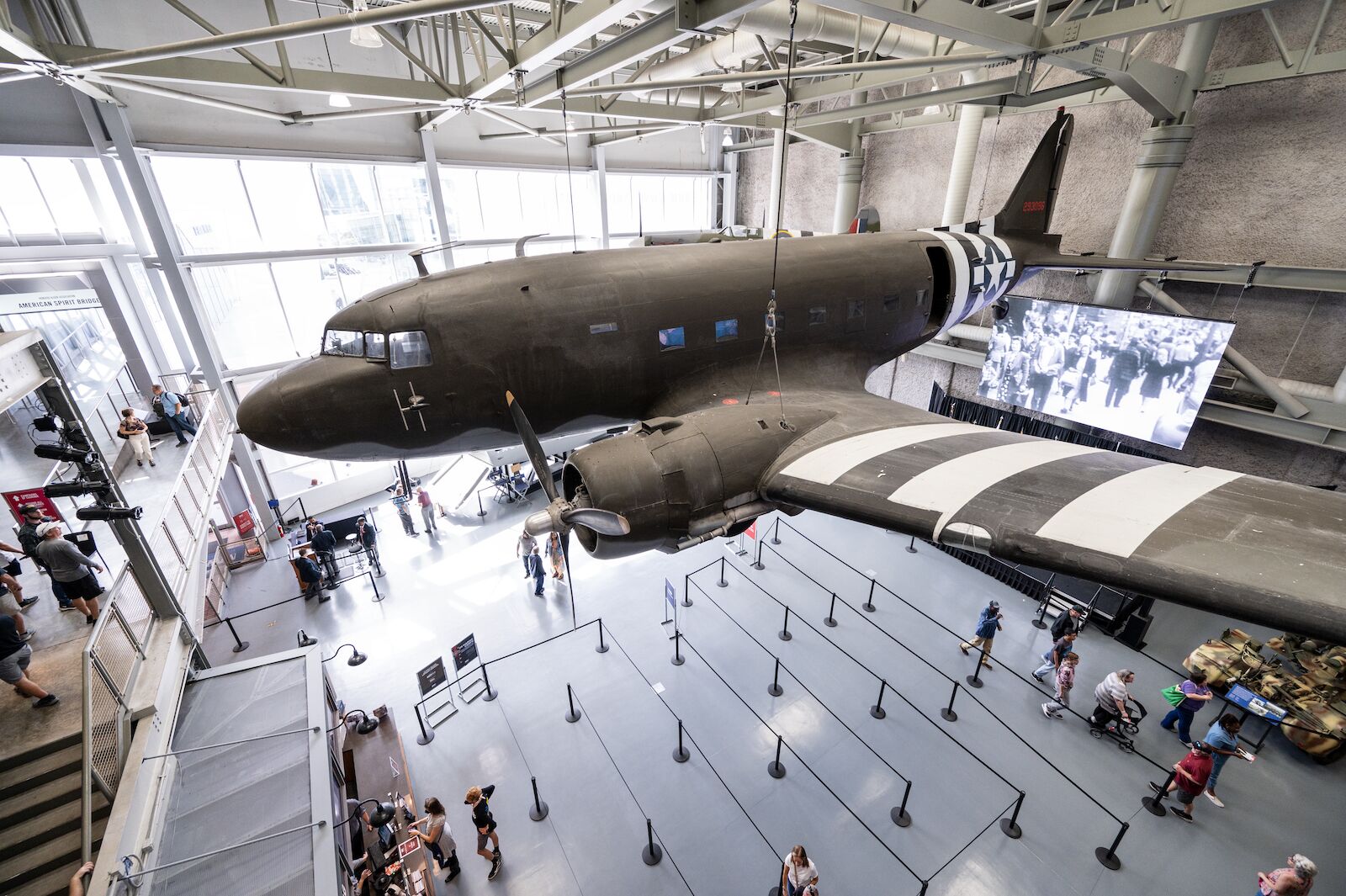
Photo: Jason Barnette
It may seem obvious to say, “Start your day at the museum entrance.” But the National WWII Museum is spread across a six-acre campus on both sides of multiple roads. So, where exactly is the museum entrance?
Getting around the National WWII Museum
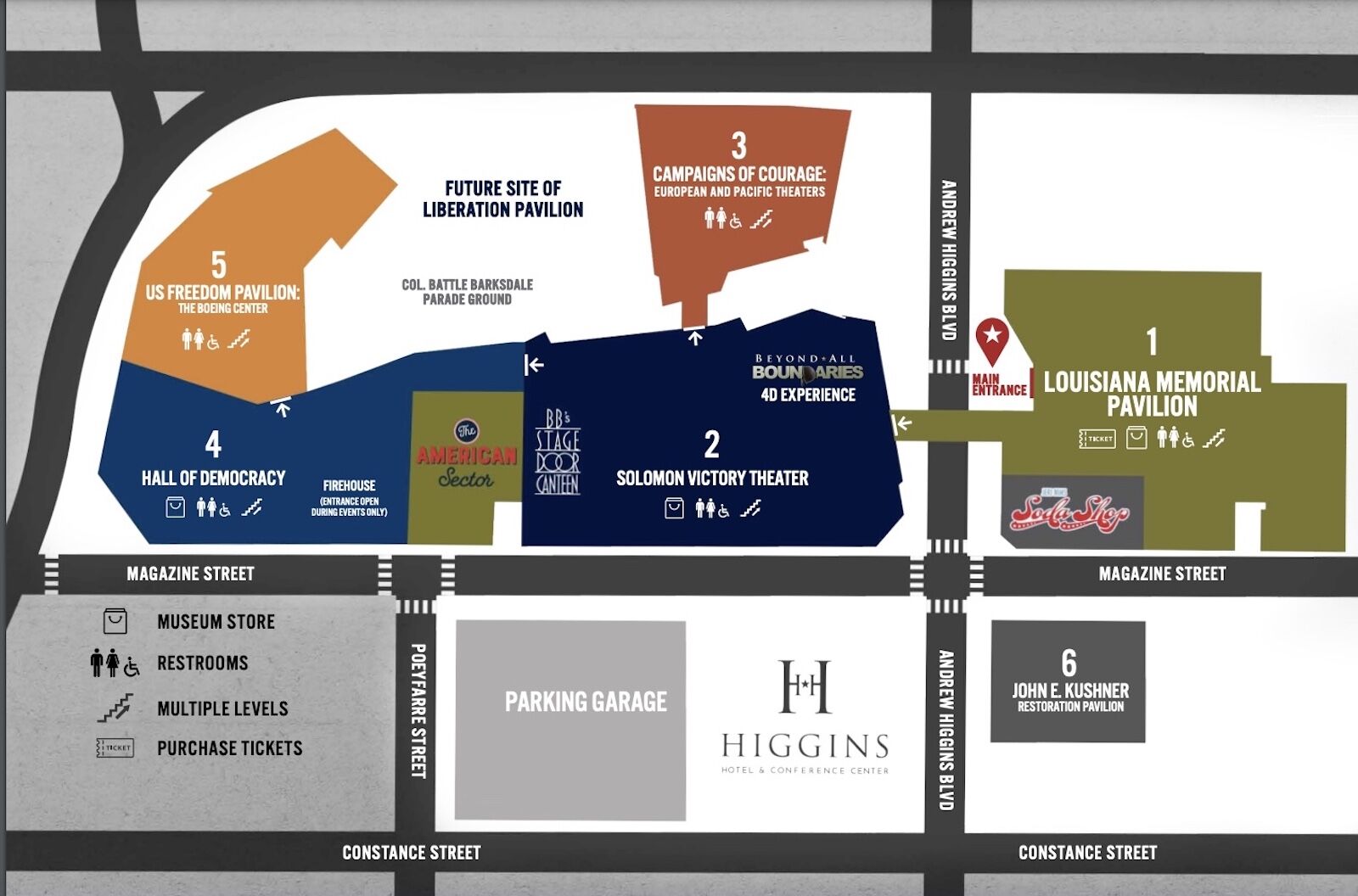
Photo: The National WWII Museum
The National WWII Museum is spread throughout five buildings on a six-acre campus. It’s easy to get around, but you need to know where you’re going.
The #1 piece of advice for visiting the National WWII Museum
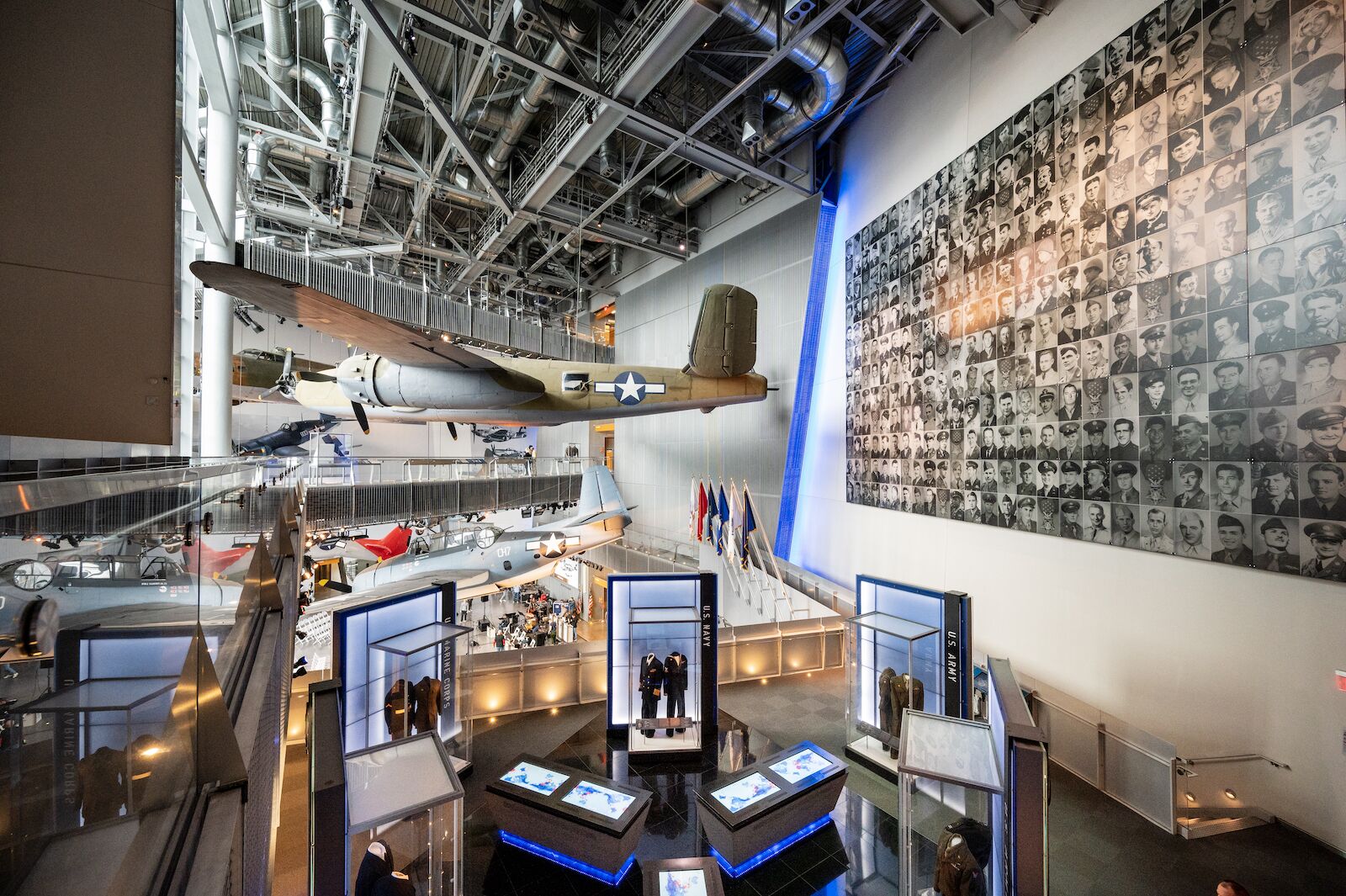
Photo: Jason Barnette
“We have 12,000 oral histories told at the museum. Galleries are fully immersive. And we have great maps,” Bell explains. “The best thing visitors can do is give themselves enough time to see what they want.”
You’ll spend more time at this museum than at other traditional history museums. Plan for that extra time.
The five things you must do at the National WWII Museum
See Beyond All Boundaries at the Solomon Victory Theater
Beyond All Boundaries is a 4D theatrical experience narrated by Tom Hanks. The film jumps off the screen with teeth-rattling vibrations, chilly gusts, and giant set pieces moving through the theater like a marionette. The film squeezes World War II into thirty minutes by telling pivotal moments and heart-rending stories from the men and women who participated in the global war.
Visit the Arsenal of Democracy

Photo: Jason Barnette
“We want to tell three stories at The National WWII Museum: why it was fought, how it was won, and what it means today,” explains Bell. And that’s why he recommends everyone visit the National WWII Museum to explore the Arsenal of Democracy.
The museum’s newest permanent exhibit tells the story of how a reluctant United States was dragged into another world war and how the war was fought on the Home Front. The exhibit uses oral histories, informative graphics, and multimedia displays showing the incredible growth of the country’s armed forces from 335,000 members to an astounding 16.1 million in just a few years.
Walk the sky-high catwalks in the US Freedom Pavilion

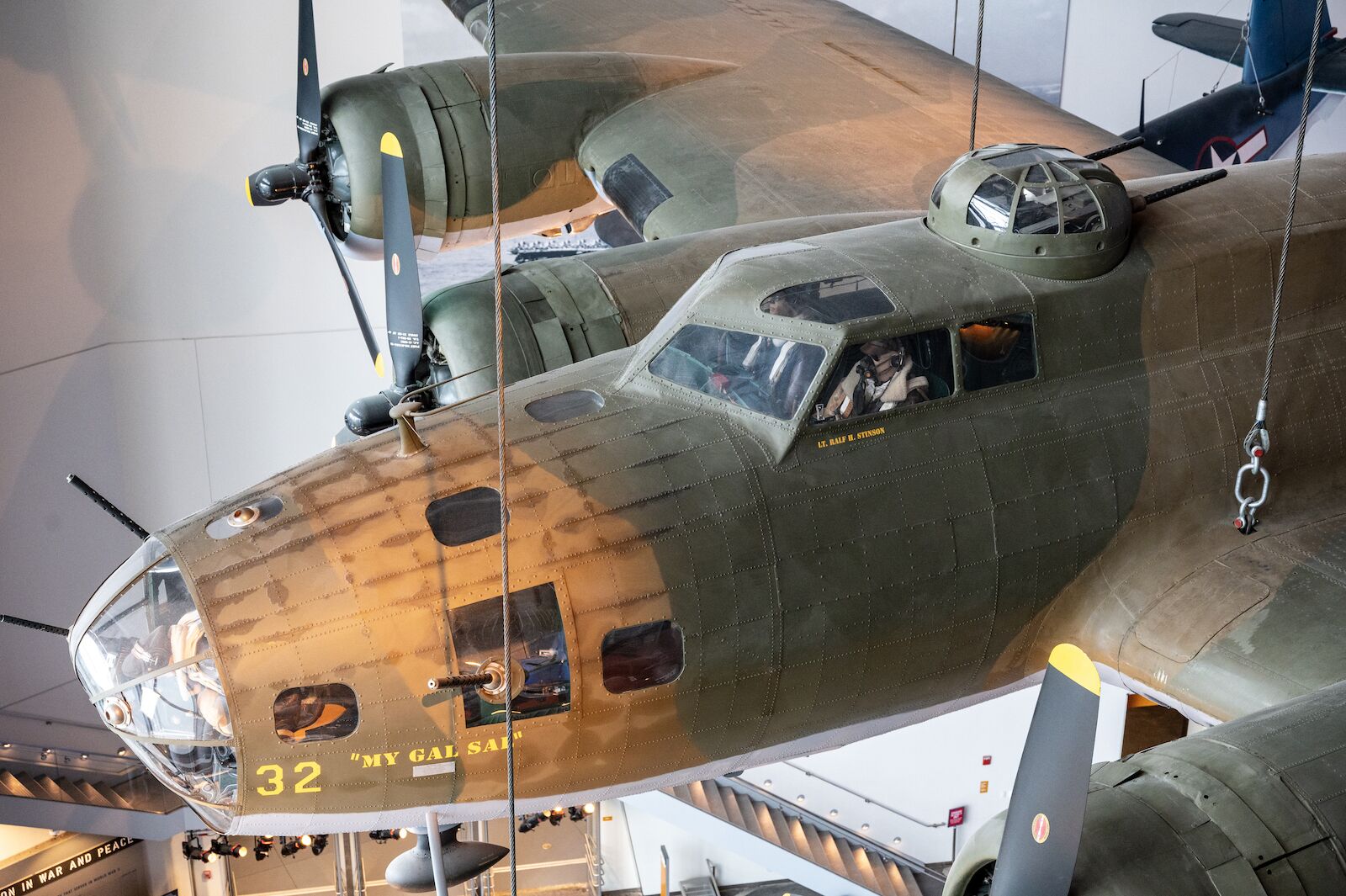
I’m afraid of heights, but even I loved the thrill of the sky-high catwalks in the US Freedom Pavilion. The fourth-floor catwalk offers an up-close look at the six fully restored WWII aircraft suspended from the ceiling, especially the B-17E “My Gal Sal.” It’s a fascinating opportunity to see these vintage aircraft from a different perspective.
Visit fully immersive galleries in Campaigns of Courage
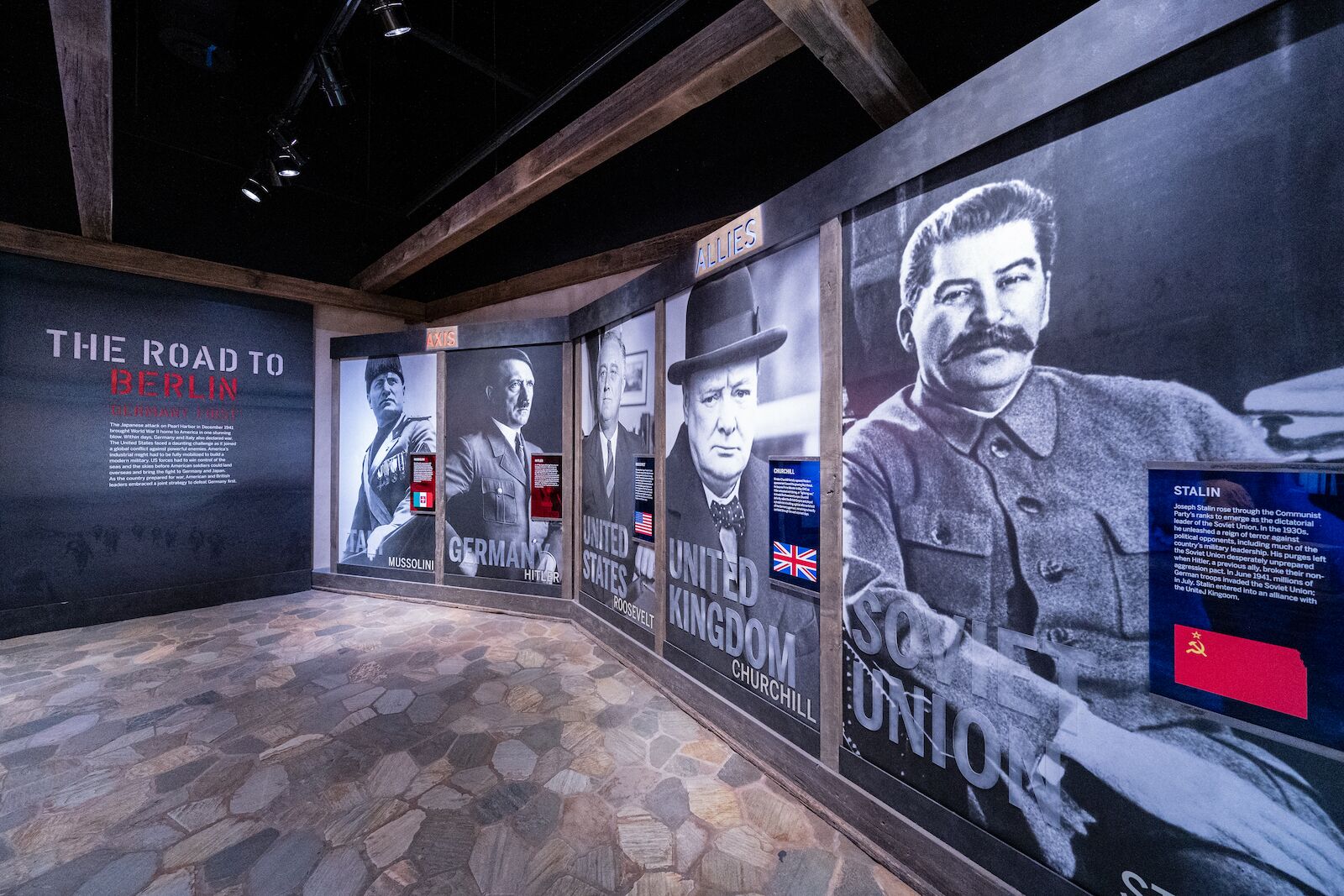
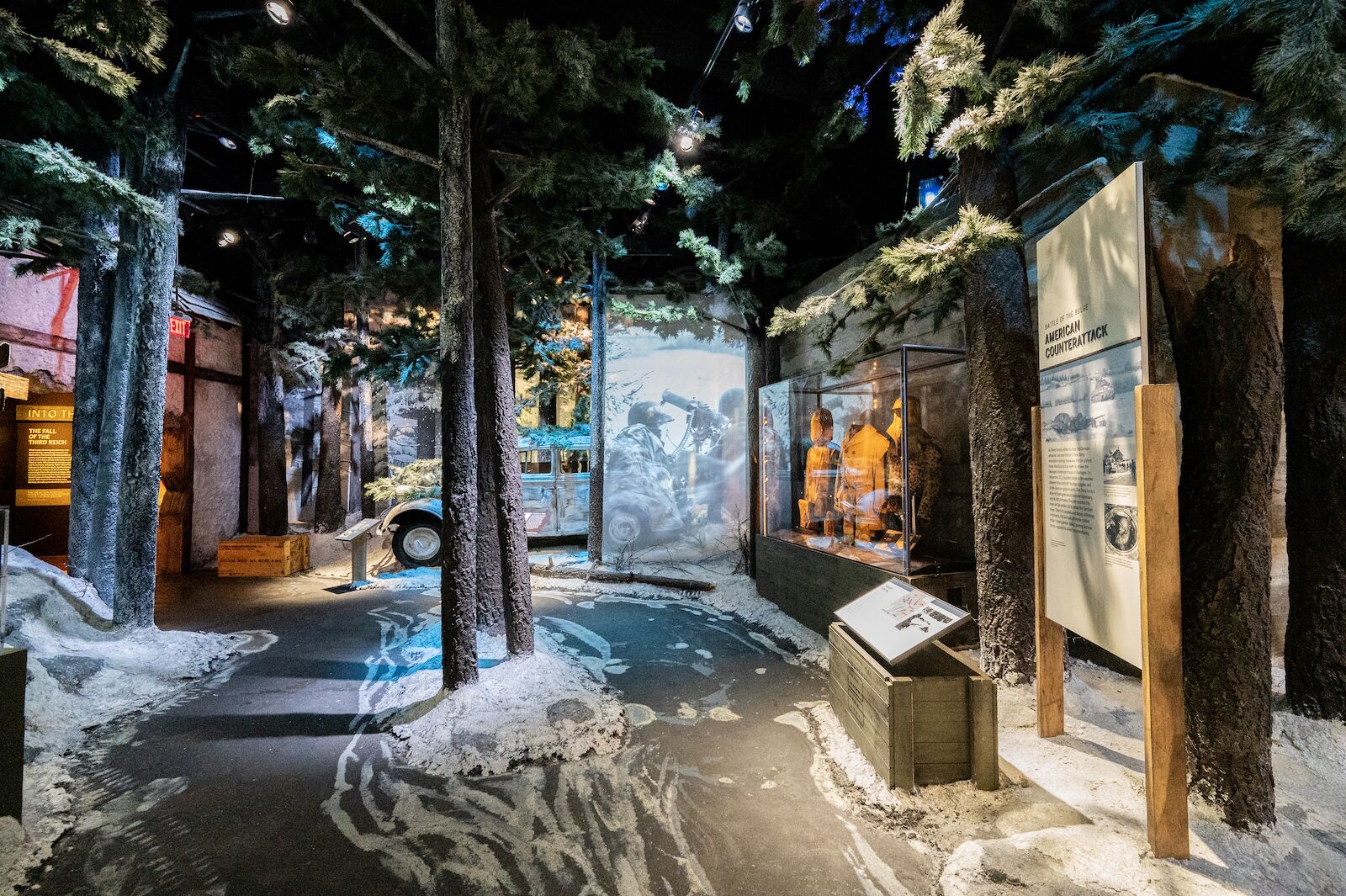
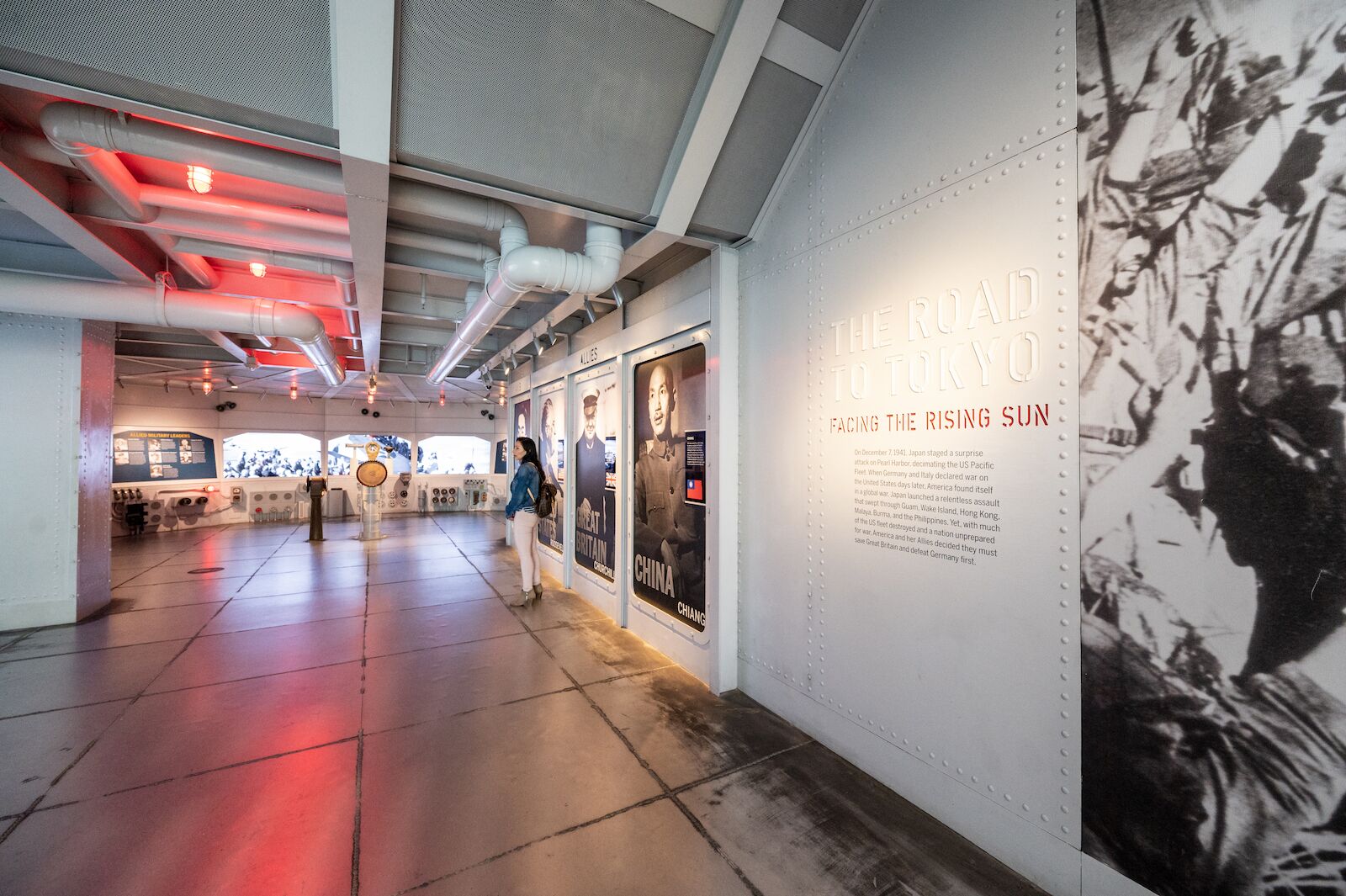
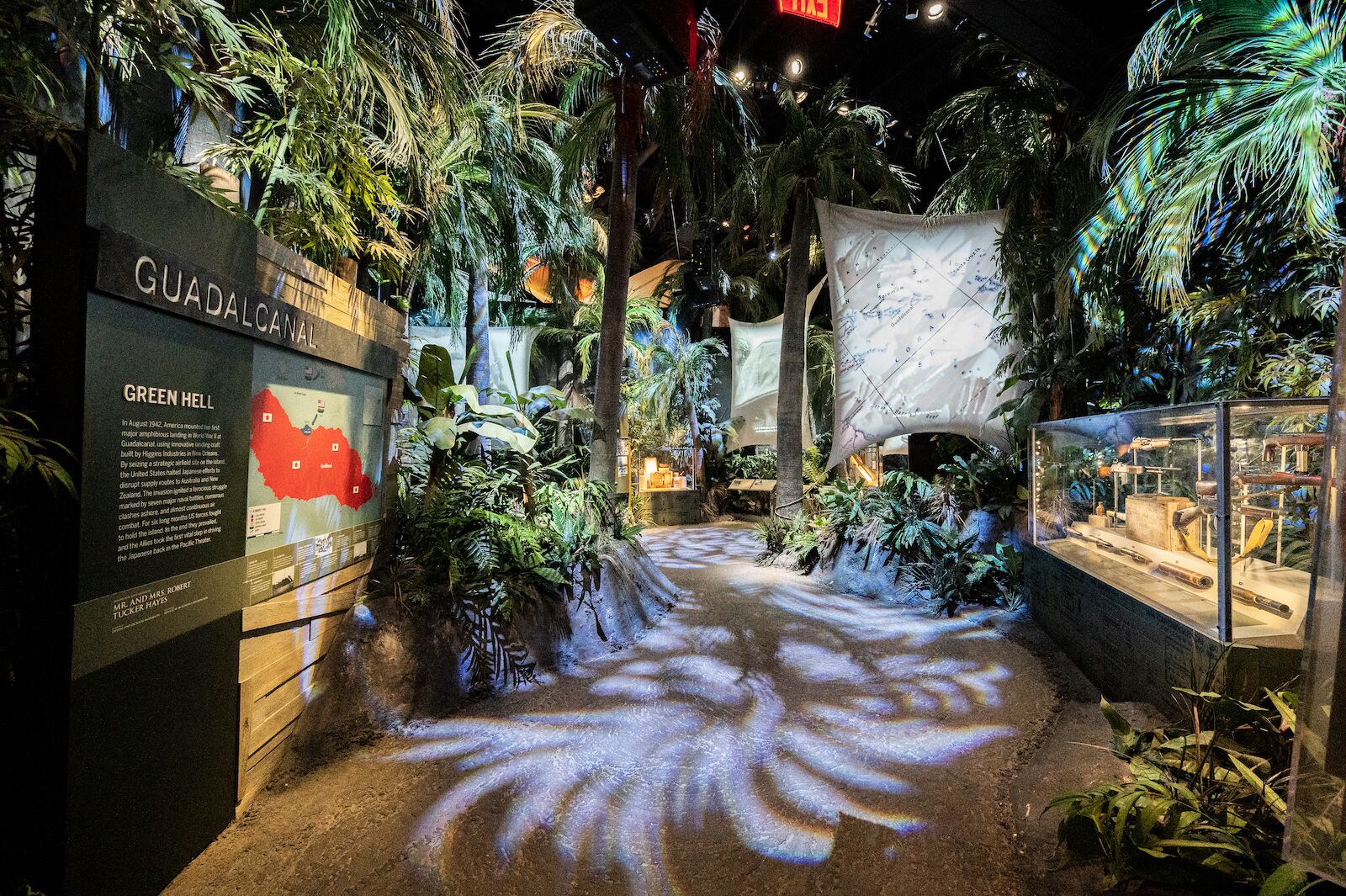
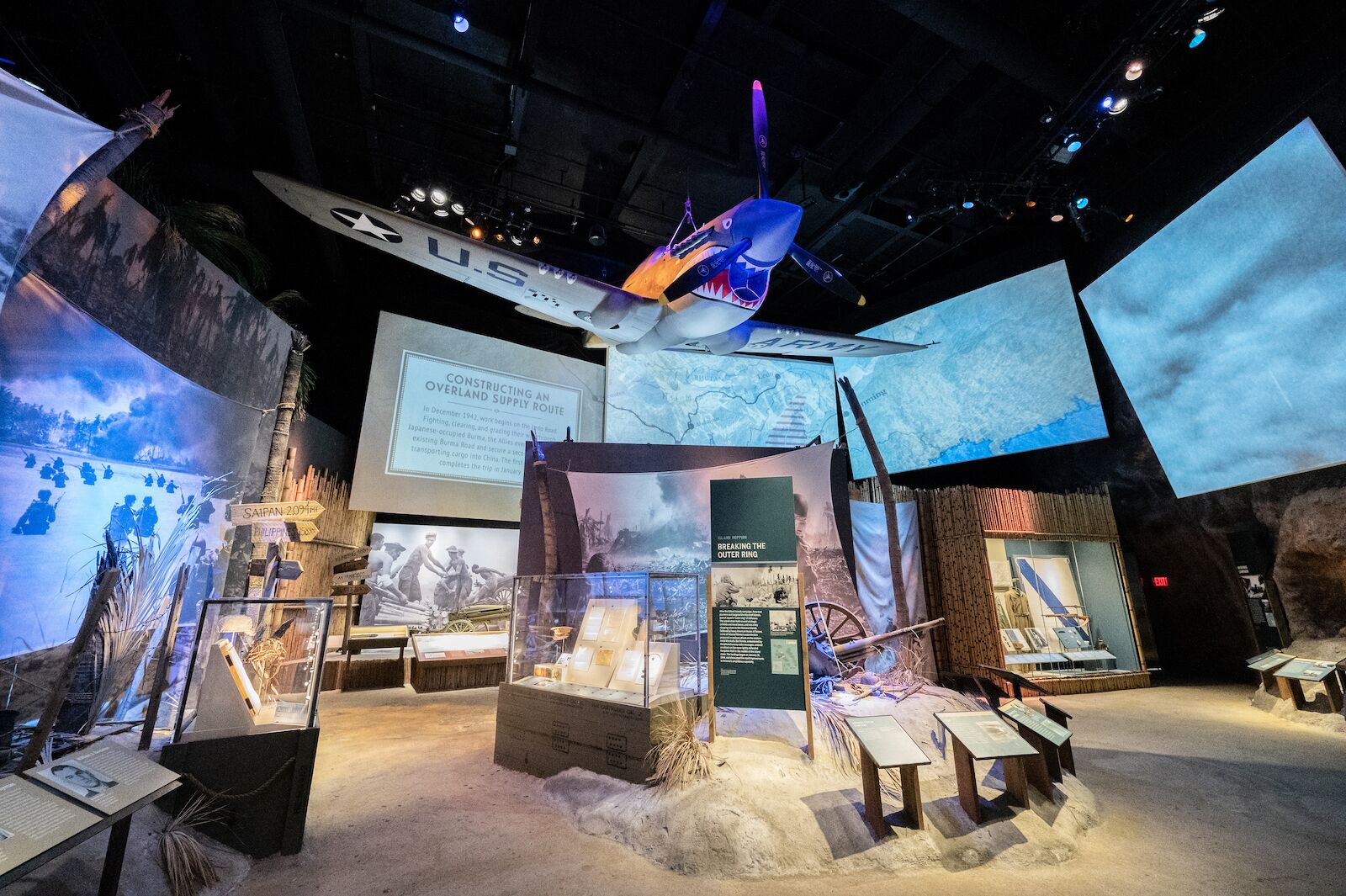
Walking into one of the galleries in the Campaigns of Courage building is like stepping into a chapter of World War II. The Road to Tokyo gallery begins on an aircraft carrier — floors painted like metal plates, riveted bulkheads for walls, and the ship’s bridge with custom-sized digital displays playing a video of aircraft taking off from the flight deck. In the Road to Berlin gallery, take a walk through a North African desert, the ruins of a French village, and a snowy European landscape. You’re guaranteed to forget you’re in New Orleans.
Listen to oral histories in the Medal of Honor Gallery
Night visits of the National WWII Museum
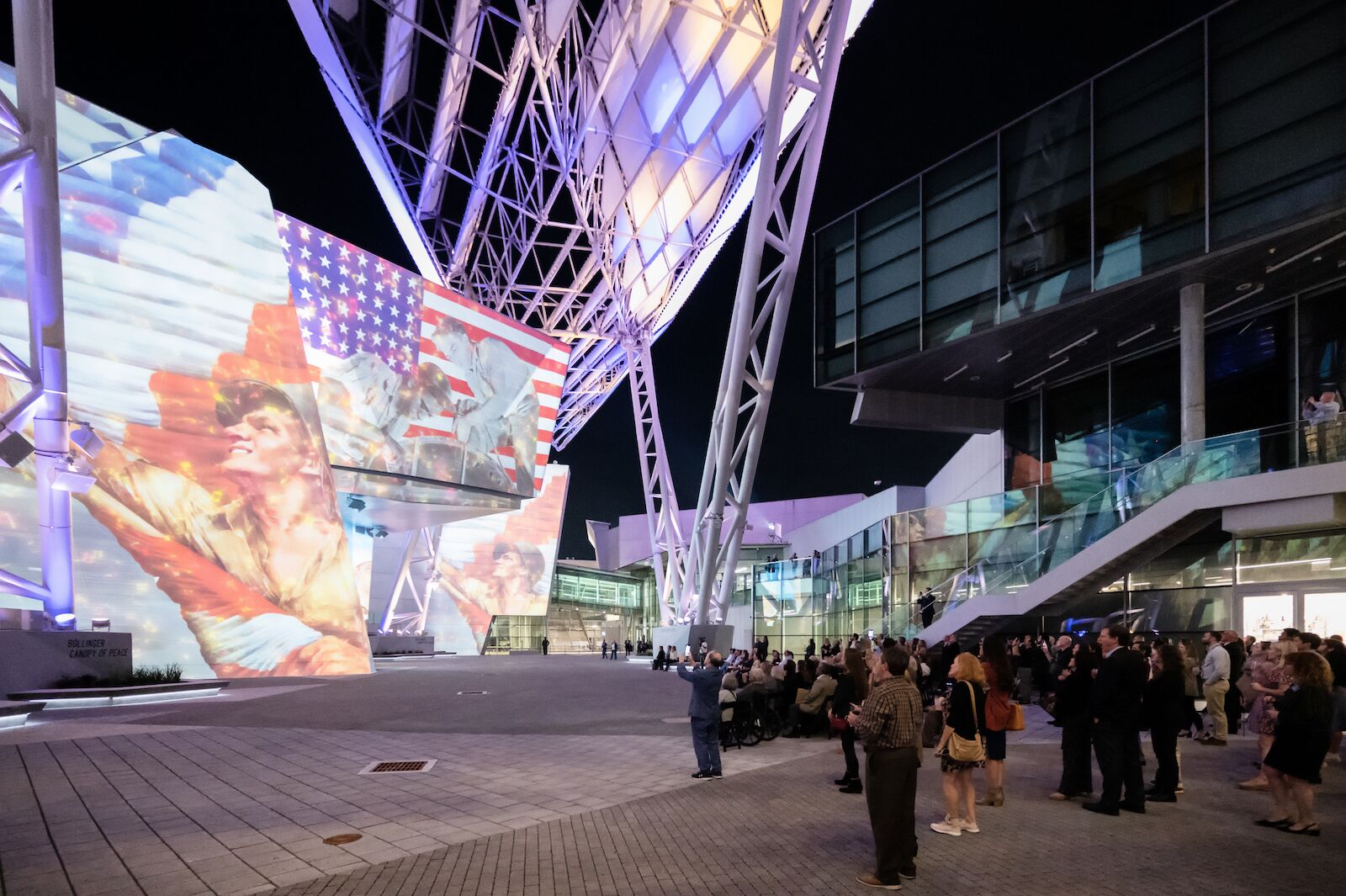
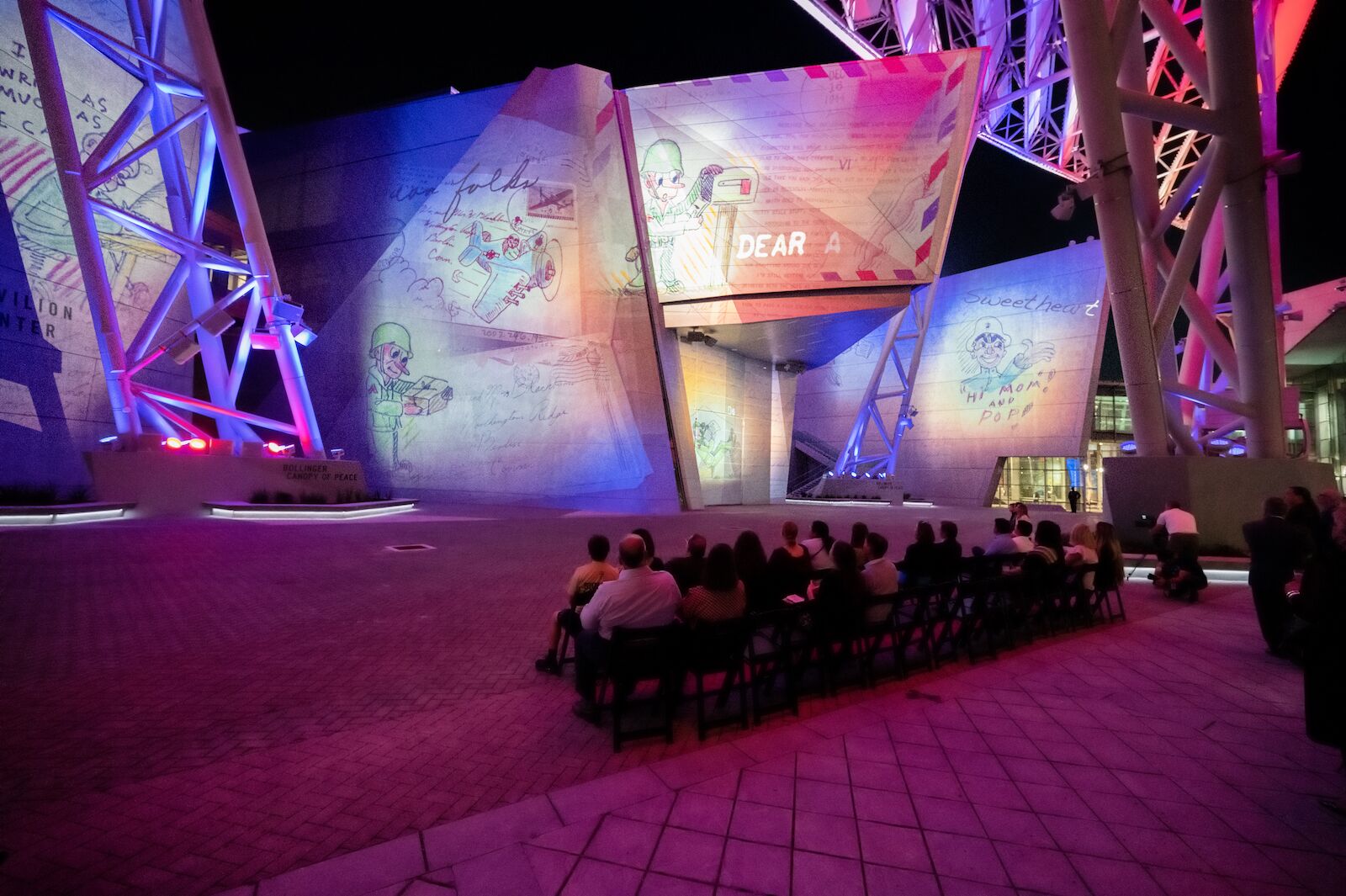
In November 2022, the museum debuted Expressions of America, a 90-minute outdoor nighttime experience transforming the Parade Ground into a 90-foot-tall outdoor theater. State-of-the-art digital projectors turn the walls of the buildings into uniquely shaped high-definition screens for a thrilling light and sound presentation. Narrated by Gary Sinise, the show celebrates the stories of men and women impacted by the global conflict.
Insider tip: Indulge yourself with a premium admission to Expressions of America that includes a three-course dinner and exclusive access to the second-floor balcony to watch the presentation.
Where to eat at the National WWII Museum?
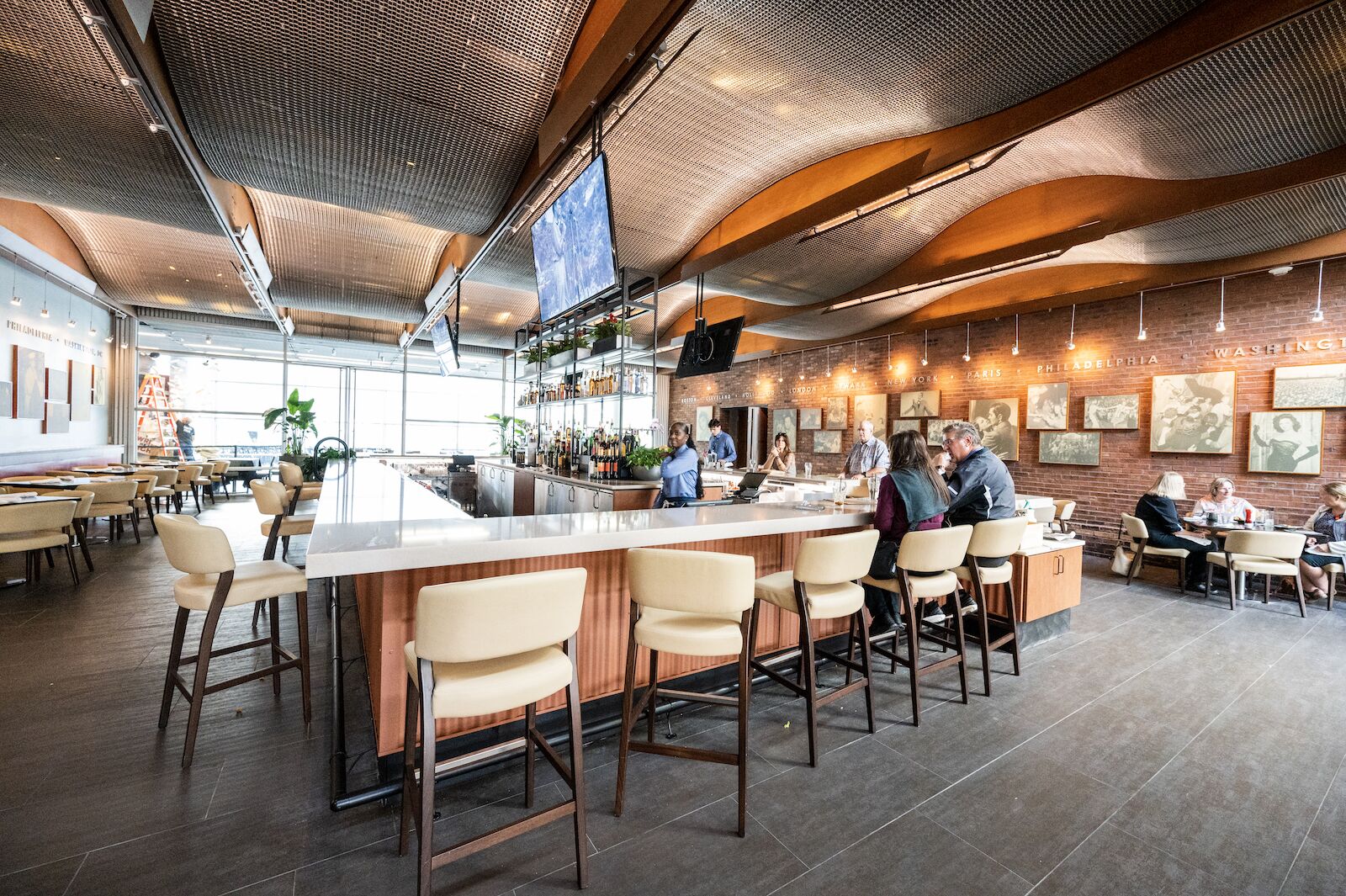
Photo: Jason Barnette
Insider tip: Don’t miss Bob Hope’s Lemon Meringue Pie, made from an authentic recipe in the 1940s USO Cookbook.
Where to stay near the National WWII Museum?
We hope you love the Higgins Hotel! Just so you know, Matador may collect a small commission from the links on this page if you decide to book a stay.
The Higgins Hotel is the official hotel of the National WWII Museum — and the building looks the part. The 230-room Hilton property features Art Deco interiors popular in the 1940s. Get a drink at Rosie on the Roof, the rooftop bar with a view of the spectacular Bollinger Canopy of Peace looming over the museum. Order room service from the French-inspired menu at Café Normandie on the ground floor. Settle into a comfortable night with spacious guest rooms offering spectacular views of the city skyline.